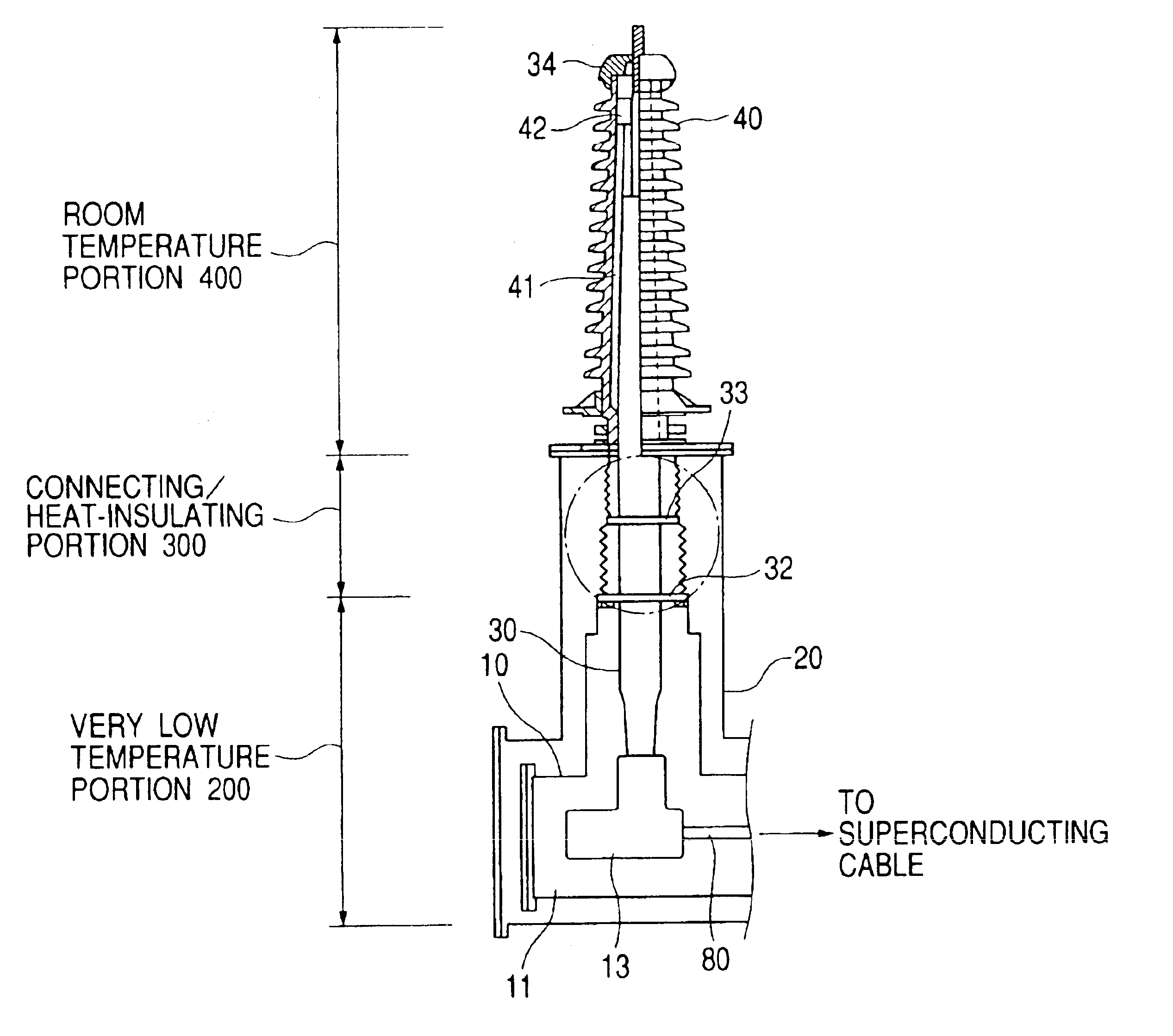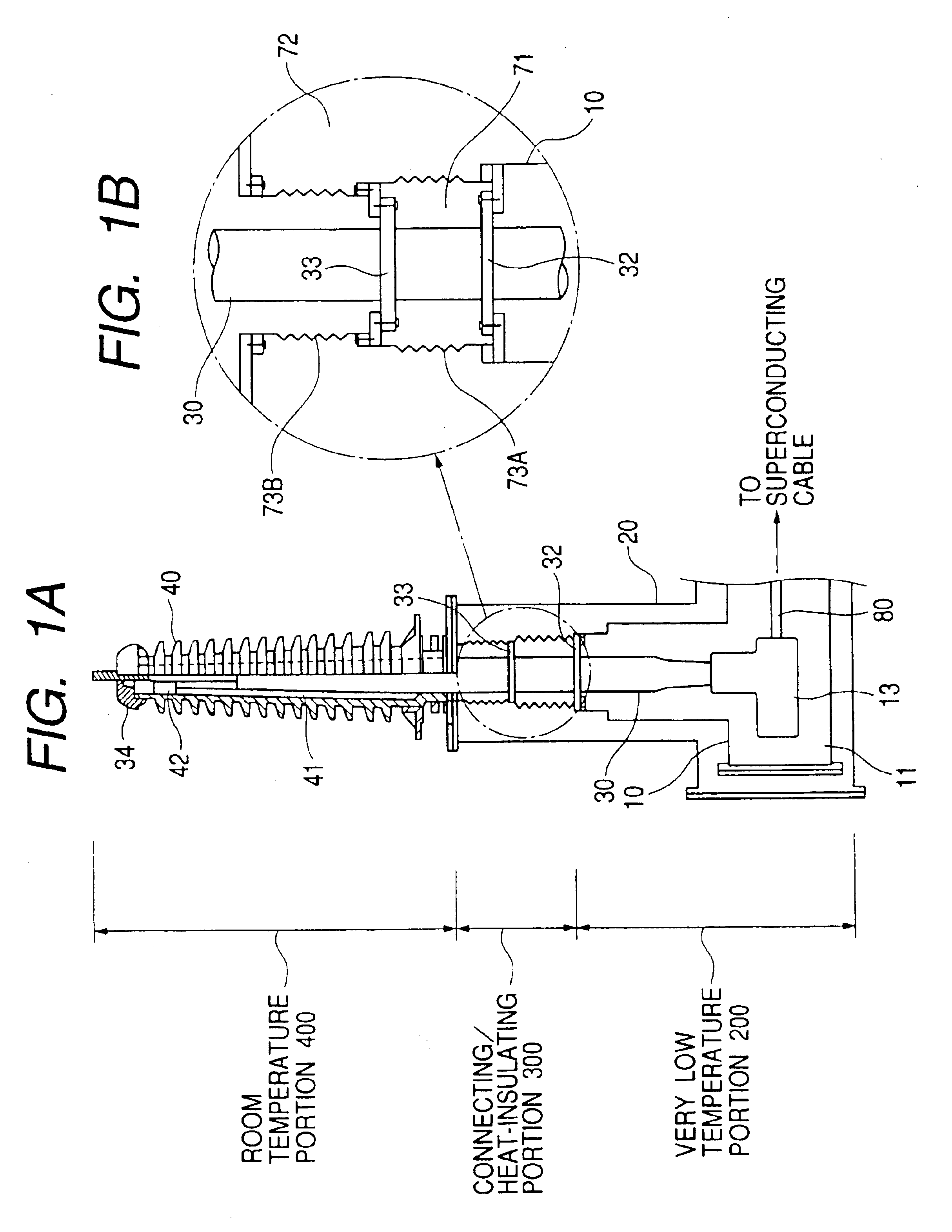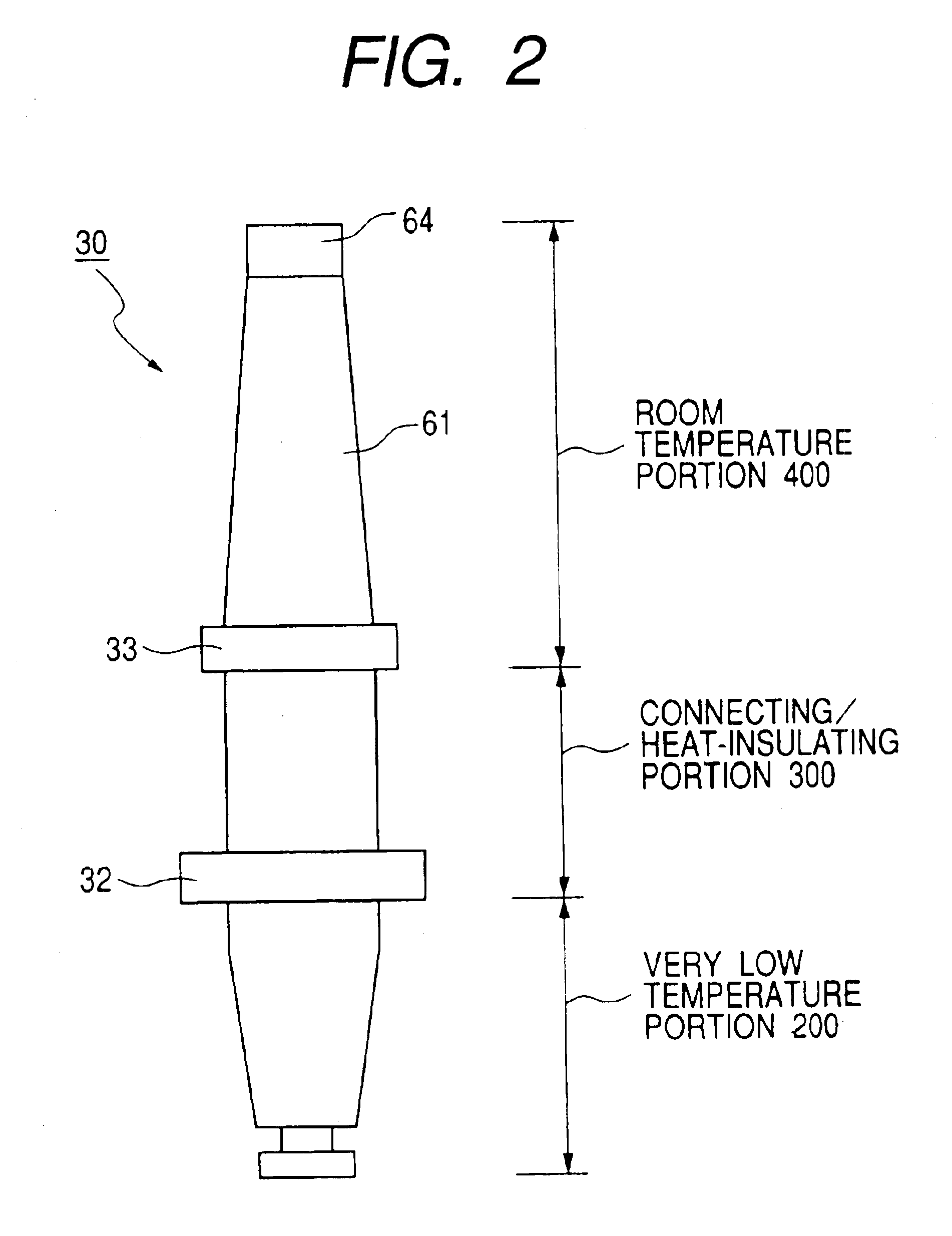Terminal structure of extreme-low temperature equipment
a technology of terminal structure and extreme-low temperature equipment, which is applied in the direction of insulated conductors, cables, conductors, etc., can solve the problems of increasing system loss as a whole, difficulty in controlling liquid level, and difficulty in applying regenerative cooling using a closed system to the refrigerant tank, so as to prevent mechanical damage to the bushing and prevent the effect of lowering the insulation performan
- Summary
- Abstract
- Description
- Claims
- Application Information
AI Technical Summary
Benefits of technology
Problems solved by technology
Method used
Image
Examples
first embodiment
(First Embodiment)
[0062]Here, a terminal structure of a superconducting cable will be described by way of example. FIG. 1A is a schematic view of a terminal structure according to the present invention, and FIG. 1B is a blow-up view of a portion of the terminal structure shown in FIG. 1A. This terminal structure has a very low temperature portion immersed in liquid nitrogen 11 in a refrigerant tank 10, a room temperature portion 400 received in an insulator 40, and a connecting / heat-insulating portion 300 formed between the very low temperature portion 200 and the room temperature portion 400.
[0063]The vacuum vessel 20 is connected to an adiabatic pipe (not shown) of a superconducting cable. A vacuum is maintained in the vacuum vessel 20, in the portion connecting with the adiabatic pipe and in the adiabatic pipe. In this embodiment, the opening diameter of the vacuum vessel 20 was set at φ600 mm.
[0064]A connecting conductor 80 connecting with the conductor of the superconducting ca...
second embodiment
(Second Embodiment)
[0080]Here, a terminal structure of a superconducting cable will described by way of example. FIG. 3 is a schematic view of a terminal structure according to the present invention. This terminal structure has a very low temperature portion 200 immersed in liquid nitrogen 111 in a refrigerant tank 110, a room temperature portion 400 received in an insulator 140, and a connecting / heat-insulating portion 300 formed between the very low temperature portion and the room temperature portion.
[0081]A connecting conductor connecting with the conductor of a not-shown superconducting cable is introduced, through a vacuum vessel 120, into the refrigerant tank 110 constituting the very low temperature portion 200. The refrigerant tank 110 is a cylindrical pipe in which the liquid nitrogen 111 is enclosed hermetically. The aforementioned connecting conductor is connected to a bushing 130 (conductor portion) in the refrigerant tank.
[0082]The refrigerant tank 100 configured thus ...
third embodiment
(Third Embodiment)
[0092]Next, FIG. 4 shows an embodiment having a different configuration in its room temperature portion. The third embodiment has the same configuration as that of the first embodiment, except that the configuration of an end portion of the room temperature portion is different. Therefore, description will be made chiefly on the different point.
[0093]This room temperature portion has a configuration in which a bushing 130 is received in an insulator, but a space 134 formed inside the bushing 130 does not communicate with an air gap portion 142 formed above an insulating oil reservoir. In this case, a vacuum is created in the space inside the bushing or the space inside the bushing is filled with helium gas not liquefied at the very low temperature. The space inside the bushing is sealed by welding the end portions of a stainless steel pipe 131, or the like. With such a configuration, any liquefied substance is restrained from occurring inside the bushing so as to s...
PUM
| Property | Measurement | Unit |
|---|---|---|
| boiling point | aaaaa | aaaaa |
| temperature | aaaaa | aaaaa |
| structure | aaaaa | aaaaa |
Abstract
Description
Claims
Application Information
 Login to View More
Login to View More - R&D
- Intellectual Property
- Life Sciences
- Materials
- Tech Scout
- Unparalleled Data Quality
- Higher Quality Content
- 60% Fewer Hallucinations
Browse by: Latest US Patents, China's latest patents, Technical Efficacy Thesaurus, Application Domain, Technology Topic, Popular Technical Reports.
© 2025 PatSnap. All rights reserved.Legal|Privacy policy|Modern Slavery Act Transparency Statement|Sitemap|About US| Contact US: help@patsnap.com



